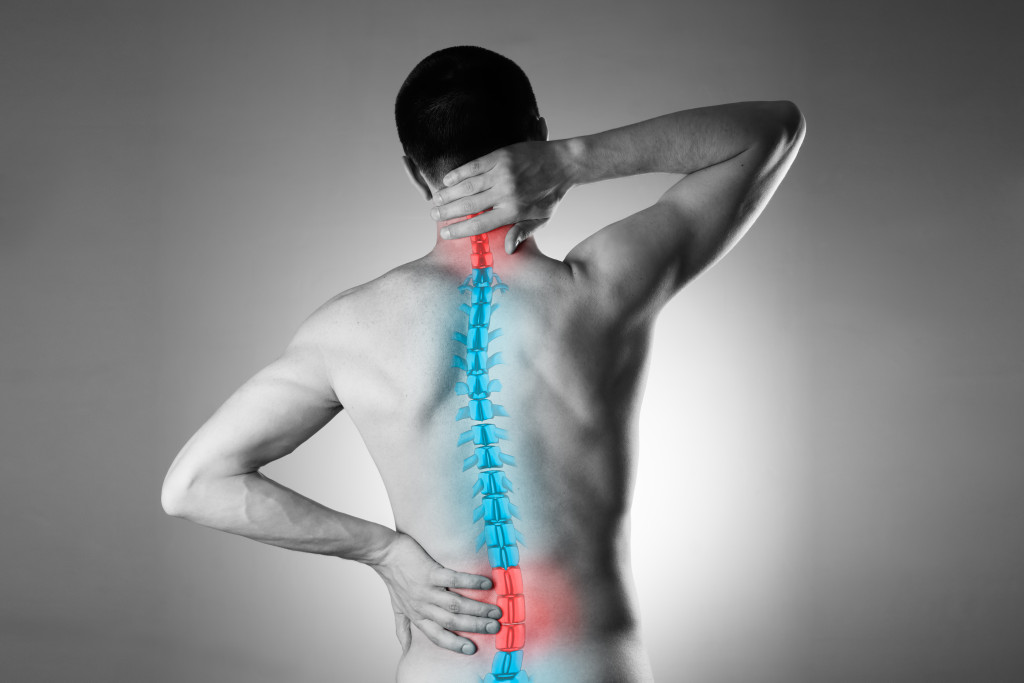Disclaimer: Mladysrecords. This site provides fashion and lifestyle content for informational purposes only.
Skeletal disorders are conditions that affect the bones and joints in the body. One of the most common skeletal disorders in the United States is scoliosis.
It’s estimated that about six to nine million Americans have this disease. However, it’s likely that a lot more people have it and are living with it undiagnosed, considering that some symptoms of scoliosis might not be all that severe. Here’s everything you need to know about scoliosis.
What is Scoliosis?
Scoliosis is a sideways curvature of the spine that typically develops during adolescence. The spine usually curves slightly inward at the top and outward at the bottom. With scoliosis, the spine can curve to the side, making the person’s back look more like an “S” or a “C” than a straight line.
There are two types of scoliosis:
- Congenital scoliosis: This type is present at birth and is caused by abnormal development of the bones in the spine.
- Idiopathic scoliosis is the most common and typically develops in otherwise healthy adolescents between 10 and 15 years old. The cause of idiopathic scoliosis is unknown.
Currently, there is no cure for scoliosis. The goal of treatment is to stop the curve’s progression and relieve pain.

The Five Problems of Living With Scoliosis
Living with scoliosis can be quite problematic but manageable. Here are the most common problems people living with scoliosis have and how they handle them.
Back Pain
The most common symptom of scoliosis is back pain. The pain can range from mild to severe and worsen over time. Back pain is caused by the abnormal curvature of the spine, putting pressure on the muscles, nerves, and joints.
The good news is that there are ways to relieve back pain caused by scoliosis. One of the best ways is to get back pain treatment from a chiropractor. Chiropractors know how to adjust the spine so that the pressure is taken off the muscles, nerves, and joints. It can provide relief from pain and even improve mobility.
Another way to relieve back pain is to do exercises that stretch and strengthen the muscles around the spine. It can help take some pressure off the spine and improve your overall posture.
Posture Problems
Scoliosis can also cause posture problems. The abnormal curvature of the spine can cause you to stand and sit in an unnatural position. This can lead to muscle pain and fatigue, as well as headaches.
The best way to correct posture problems is to see a chiropractor. They can help to realign the spine and improve your overall posture. They can also give you exercises to do at home to help improve your posture.
Breathing problems
Scoliosis can also cause breathing problems. The abnormal curvature of the spine can compress the lungs and make breathing difficult. It can lead to shortness of breath, fatigue, and even chest pain.
If you are having difficulty breathing, you must see a doctor immediately. In addition, they will likely recommend that you see a pulmonologist (a doctor specializing in lung diseases) for further evaluation.
There are several ways that Pulmonologists can help people with scoliosis and breathing problems. One way is to prescribe medication to help open the airways and make breathing easier. Another way is to recommend physical therapy exercises that help improve your breathing.
Heart problems
Scoliosis can also cause heart problems. The abnormal curvature of the spine can put pressure on the heart and make it work harder. This can lead to arrhythmias (abnormal heart rhythms), congestive heart failure, and even stroke.
If you have scoliosis and are having heart problems, you must see a cardiologist (a doctor specializing in heart diseases) for evaluation. They will likely do some tests to check the function of your heart and prescribe medication if necessary.
Scoliosis and heart problems are severe complications that you shouldn’t take lightly. People who have such a complication are asked to reduce their weight and salt intake, do regular physical activity, and follow up with their doctor regularly.
Fatigue
Lastly, there is fatigue. Many people with scoliosis experience fatigue because of the extra effort required to do everyday activities. The abnormal curvature of the spine can make it difficult to move around and lead to muscle pain.
There are several ways to manage fatigue caused by scoliosis. One way is to get regular exercise. Exercise can help to increase your energy levels and improve your overall fitness. Another way is to get enough sleep. A lack of sleep can cause fatigue, so it’s essential to ensure you’re getting enough rest.
Scoliosis can be a complex condition to live with, but there are ways to manage the symptoms. By following the treatment options above, you can manage its symptoms and live a normal life.

